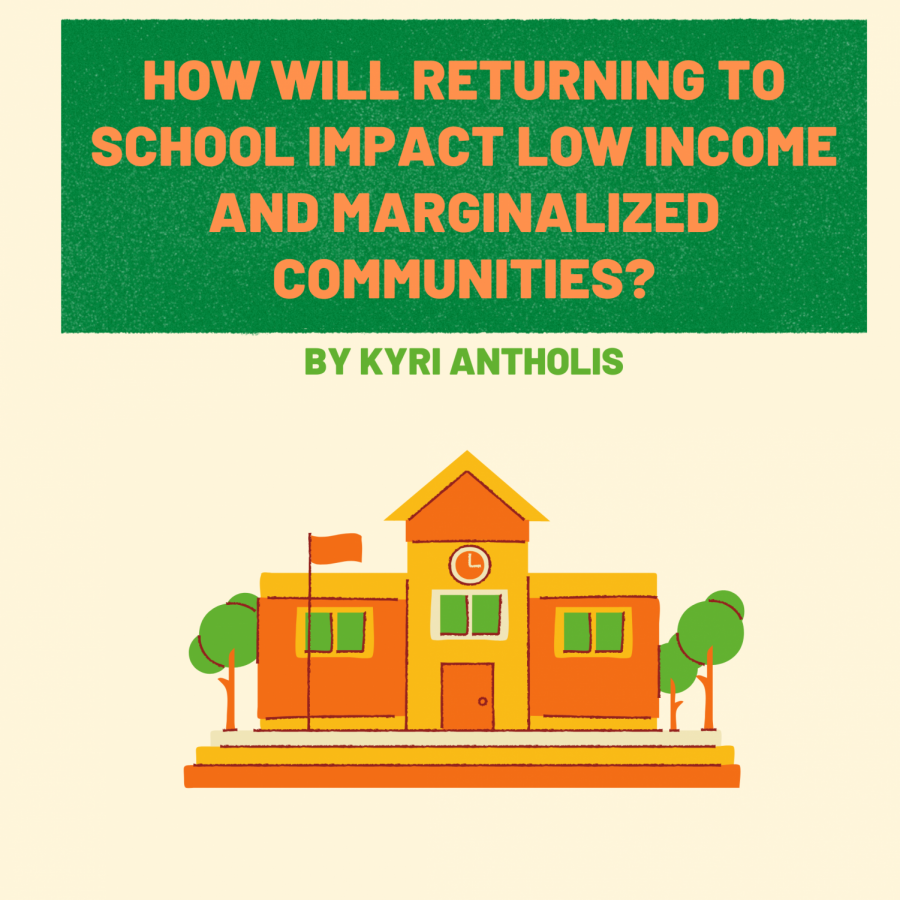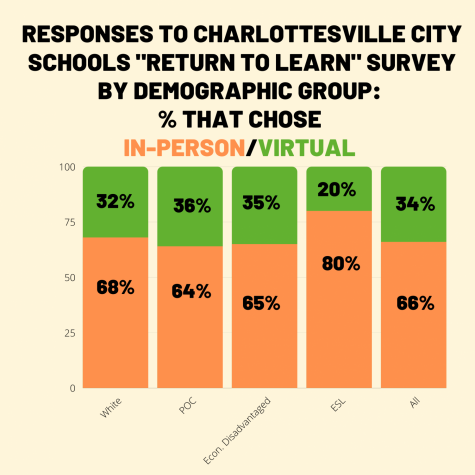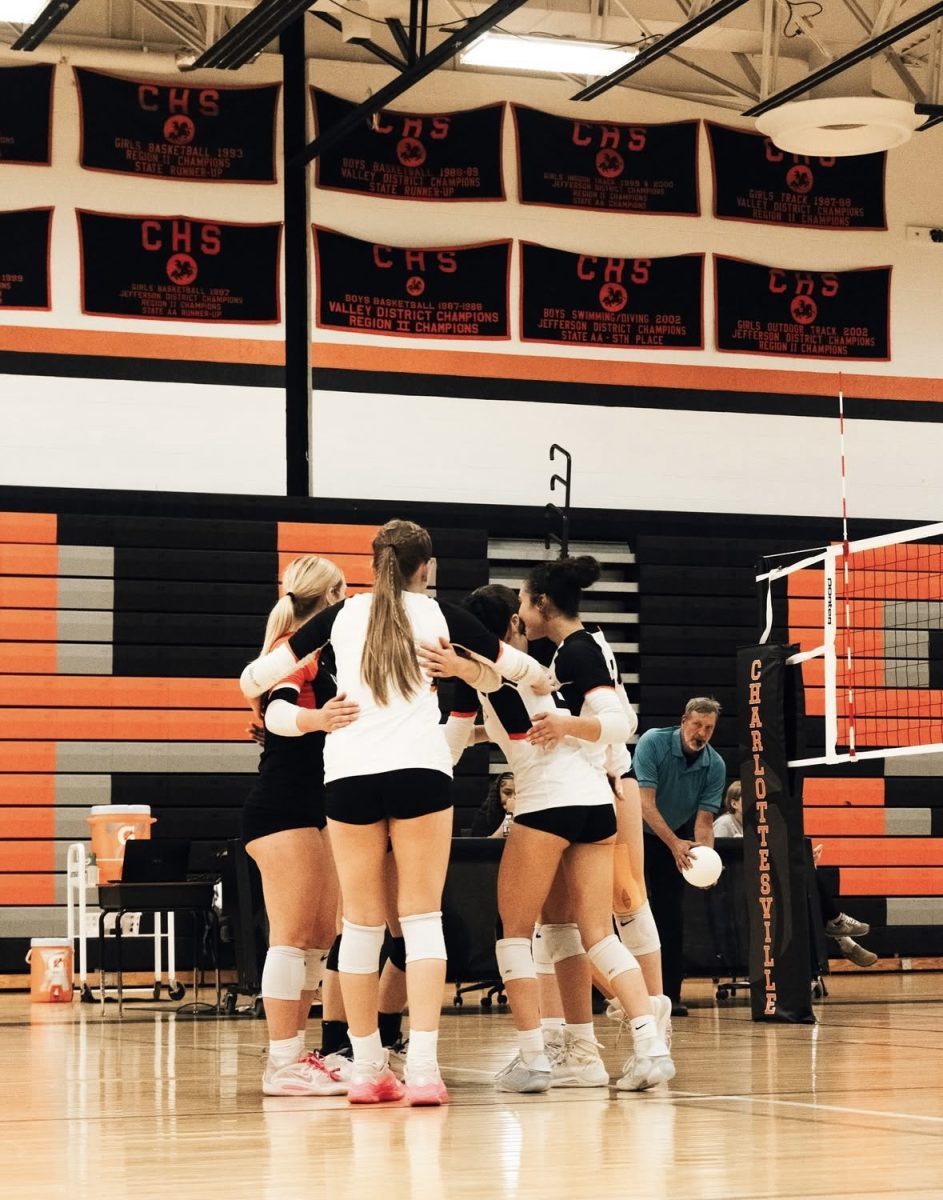How Will Returning to School Impact Low Income and Marginalized Communities?
December 17, 2020
As the possibility of returning to in-person learning becomes more and more of a reality, the school board will vote this Wednesday on a plan to bring students back by the first week in February. In anticipation of this, however, some express concern about how this decision will affect the communities already hit hardest by the pandemic.
The vote on the current “Return to Learn” plan comes right before schools will close for winter break. The current proposal involves a staged return among grades over a few weeks. At Charlottesville High School, there will be two “cohorts” that alternate days of attending school in person, meaning students will have three days of asynchronous work each week.
Under this plan, students will be required to undergo daily health checks, wear masks at all times except when they’re eating, and stay six feet apart in their classrooms, in which there will be no more than 10 students at a time. There are currently teams within the schools ensuring that the buildings are physically equipped for safe, in-person learning, such as upgrading the ventilation and installing barriers in classrooms.
Dr. Sherry Kraft, a member of the Charlottesville City School Board, explained that while there are still some unknowns about this “Return to Learn” plan, she believes it is worth trying, despite the possibility of having to return to online learning. Others, however, worry that even providing families with the choice to send their kids back to school creates more problems than it solves.
Marginalized and low-income communities have been reporting the highest rates of Covid-19 cases, as this demographic is composed of workers whose occupations put them at higher risk of exposure to the virus. Furthermore, low-income families statistically have more members living in one household, including more high-risk members of the community such as grandparents. Additionally, these communities have the least access to affordable health care and supplies to protect against the virus. “If we return too early, COVID could be spread through these communities, and hit them harder than others,” one Charlottesville High School student said.
However, these communities are also the ones in which students are struggling the most with online school. Whether it’s due to poor internet connection, other responsibilities within the household, lack of support from parents, or shortage of other resources necessary for school, many acknowledge that in-person learning may be a more desirable academic environment. “Kids with poor internet access/home life will then be able to resume more equal schooling with their peers,” another C.H.S. student responded to a recent survey. “Right now, a gap exists in that access, furthering the divide.”
“Members of marginalized communities want their kids in school because they’re not getting the grades that were achievable with in-person learning and not getting the help they need. But then the concern is ‘I don’t want my child to get the virus and I want them to stay healthy,’” observed Nya Bryant, a freshman at Charlottesville High School who is a member of the Black Student Union and the Black Youth Action Committee. “It’s putting the marginalized communities in a hard position, and many who are in the role to make decisions are aware of that. It’s nothing new.”
Ultimately, when presented with the choice between returning to school or continuing with virtual learning, a recent survey sent out by Charlottesville City Schools reported that the majority of all families want their children to return to in-person learning. Broken down among demographics, the survey showed that 80% of ESL students, 68% of White students, 66% of economically disadvantaged students, and 65% of POC students wished to return to in-person learning.
But Bryant expressed further concern that these marginalized communities are not accurately represented in the decisions about the return to in-person learning both because they are underrepresented at school board meetings and because the forms with which the school board communicates don’t always reach these households and communities, This is reflected in the recent survey in which only 75% of POC and economically disadvantaged families completed it, compared to 90% of White families. “Not everybody has email access or is signed up for robocalls. They’re not going to get those surveys or that information,” Bryant said, proposing that the school board representatives go into the community to provide this information in person, or reach out to community leaders to help spread the much-needed information. “People are going to be engaged because they already feel excluded by the people making decisions in our school community.”
Dr. Kraft said that the team focused on outreach to families has been working within these communities to gather their thoughts surrounding the return to school. She explained that there are certain community events, such as food and clothing drives, at which school representatives are able to talk with families. She recognized that it’s never a perfect system and there are people who may get overlooked, but the school system is trying to represent everyone in their decisions.
There are worries beyond just whose voices are getting heard in this discussion, however. Regardless of whether or not the school board decides to bring students back to in-person learning, many still don’t have a strong internet connection, making it difficult for them to engage in class, complete their assignments, and connect with their teachers. The school board has been working with internet providers in town to strengthen connections in some areas and are giving internet hotspots to others. While some are again being overlooked in these efforts, the school board will continue to address this in the coming months.
There are additional concerns about households’ access to personal protective equipment, or PPE, to keep students and families safe in the event of a return to in-person learning. “We need to make sure that everyone has proper PPE for when they’re at school and at home … [like] antibacterial wipes, hand sanitizer, and masks,” Bryant explained. “If we don’t go back to school, we should still provide people with PPE so that they can stay safe at home. It’s not only important to ensure safety as we plan to return, but also safety when students are reporting to school and back to their homes and communities.” Dr. Kraft also acknowledged this and said that one of the boards’ priorities in returning to school will be to provide students with safe and effective masking, one of the most important components of protecting against the virus. She also explained that the school system is working closely with the health department in the hopes of setting up more testing locations and ensuring that staff and families will have access to testing in the case of an exposure within the school.
Others share apprehensions that giving students and families the option between in-person learning and virtual learning will create even more disparities between students who choose to be in person and those who choose to be online. “Those who go back are going to be at an advantage,” Bryant said, concerned that teachers will give more attention to those students in person and that parents’ efforts to protect their children may be reflected in the grade book. “[Teachers] have to be committed to all their students, not just the students who are making As and Bs.”
There are no guarantees in these circumstances, which continues to distress many. However, students in low-income and marginalized communities are facing even more challenges in making decisions that will affect themselves and their families, including returning to school. “For some students, the decision to go back in person is less difficult because there are more factors in their life they have control over,” Dr. Kraft explained, acknowledging that for many other students, there are many changing components that will impact their decisions regarding their education.






